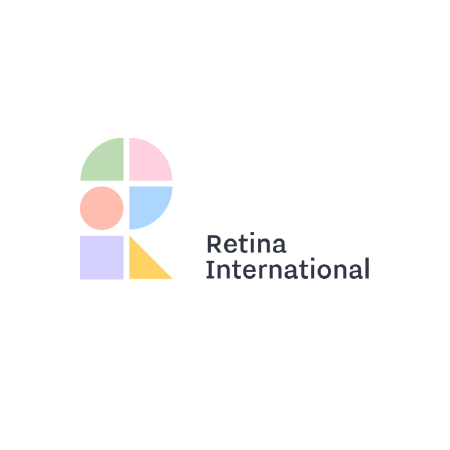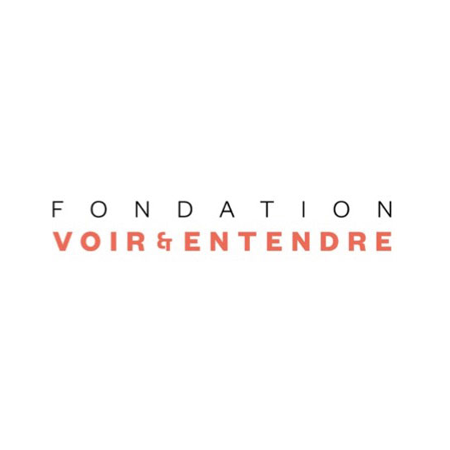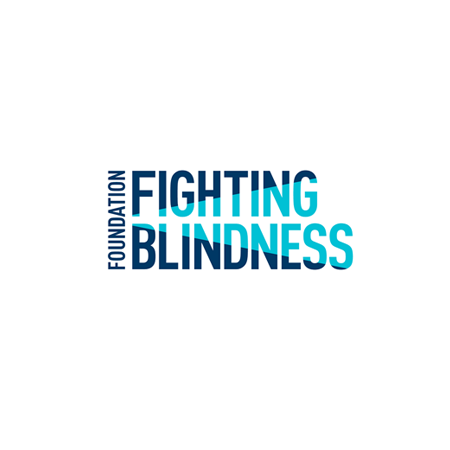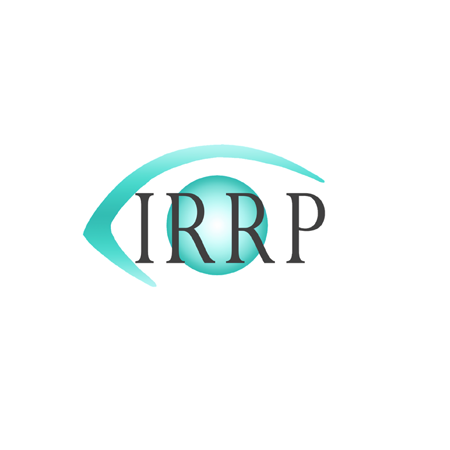Past, Present and Future: An Overview of The Ophthalmic Gene Therapy Landscape
November 2024- Following the presentation of SparingVision’s one year results from its PHENOROD2 natural history study and preliminary SPVN06 safety data at several major scientific conferences (including ARVO, ASGCT, ESGCT, Retina Society, and Euretina) in 2024, our Chief Medical Officer Dr Daniel C. Chung discusses the importance and impact of natural history studies in the ophthalmic gene therapy space.
What are the key hurdles to developing new ophthalmic genomic medicines and how is SparingVision overcoming them?
More than 7 years after the approval of Luxturna and despite some significant strides in the ocular field, there is still more to be done in natural history studies and of endpoint development for clinical trials in Inherited Retinal Diseases (RCD) in general and retinitis pigmentosa (RP) in particular, which has created challenges in establishing metrics needed to demonstrate meaningful outcomes in ophthalmology clinical trials.
At SparingVision, we are taking an innovative approach to fill the gaps and improve the regulatory approval rate for new ocular treatments. Natural history studies are key to this endeavour, and we are conducting one of the largest prospective natural history studies for retinitis pigmentosa, called PHENOROD2, in patients with variants in the rhodopsin (RHO), phosphodiesterase beta (PDE6b), and phosphodiesterase alpha (PDE6a) genes. Our contribution to grow the body of research in ocular gene therapies will expand our understanding and capabilities in the field.
What key insights will be gained from SparingVision’s natural history study, PHENOROD2?
The ongoing four-year PHENOROD2 study will gather comprehensive data on disease progression and patient-relevant outcomes for RP. It will help establish standardized, patient-relevant endpoints that will aid our understanding of the impact of any therapeutic on the natural progression of the disease, ultimately accelerating the development, safety, efficacy, and approval of emerging ophthalmic genomic medicines.
Specifically, PHENOROD2 will help identify and validate endpoints that could be used in registrational trials in RP, with a focus on structural markers such as fundus autofluorescence (FAF) and ellipsoid zone (EZ). The hope is that these findings can be used by the wider RP research community for the design of future clinical trials, including SparingVision’s ongoing Phase I/II trial, PRODYGY.
The one-year follow-up data from PHENOROD2 revealed structural markers associated with accelerated degeneration in certain patients. This finding is significant for treatments like SPVN06 that aim to enhance cone survival and mitigate disease progression. By providing these comprehensive insights and focusing on patient-relevant outcomes, PHENOROD2 will contribute significantly to the advancement of gene therapies for a broader spectrum of IRDs, optimizing clinical trial design and potentially expediting the development of effective treatments for RP and related conditions.
Can you explain the use of structural and functional markers in inherited retinal disease?
Structural markers, such as optical coherence tomography (OCT) and fundus autofluorescence imaging, are primarily used to assess the physical integrity of the retina, while functional markers, such as visual acuity and electroretinography (ERG) evaluate visual function, both of which have been used in monitoring disease progression and the efficacy of gene therapies.
While some patients with IRDs may maintain good central vision, as measured by best correct visual acuity testing (BCVA), this standard functional marker fails to capture the full extent of visual impairment. BCVA doesn’t account for the significant reduction in visual field often experienced by rod-cone IRD patients. As a result, many individuals with a rod-cone IRD view the world as if they’re looking through a straw.
To address this limitation and the need for a more comprehensive assessment of visual function in IRD patients, SparingVision is actively engaging regulators to advance the acceptance of other functional endpoints beyond BCVA, such as full-field light sensitivity threshold (FST) assessment. Through PHENOROD2, the subset of patients we identified who demonstrate a higher rate of disease progression were measured with structural markers of clinical interest such as the horizontal width of the EZ zone (hEZ) and the diameters of the inner ring of hyperautofluorescence (hFAF and vFAF). These findings are relevant to our ongoing Phase I/II trial, PRODYGY, which utilizes these same markers to evaluate the safety and initial effectiveness of SPVN06 over 12 months.
What is the current view of regulators on the use of structural and functional markers?
The FDA has shown growing recognition of structural markers as valid endpoints, exemplified by their use of the EZ zone as an acceptable endpoint for StealthBio’s dry AMD trial, as well as the recent approval of Syfovre® by Apellis for Geographic Atrophy (GA) using fundus autofluorescence. This validation could potentially be applied to other retinal diseases, including RP, highlighting its additional relevance in ophthalmic research. This is particularly encouraging for clinical trials in ophthalmic gene therapy, potentially facilitating the development and approval process. However, while regulators have set a precedent for using structural markers like FAF and the EZ zone for faster progressing indications such as dry AMD, there is still a need for established endpoints for slow progressing diseases like RP.
How are the subset of patients, regarded as ‘fast progressors’ important to SparingVision’s work?
As an adult-onset disease, RP typically progresses slowly, which makes it challenging to identify reliable markers of disease progression. There are patients who show more rapid disease advancement and PHENOROD2 aims to identify these ‘fast progressors’ as they could serve as a key patient population for clinical trials in RP, including PRODYGY, if they are deemed suitable for inclusion by the study investigators. This approach could potentially accelerate the detection of treatment effects.
What are your hopes for the future?
My hopes for the future are centred around the accelerated development and availability of ophthalmic gene therapies, which hold immense potential for transforming the treatment landscape for ocular diseases. Regulators, industry, academics, and physicians all agree that the establishment of clinical endpoints is necessary to expedite ophthalmic gene therapy development and bring them closer to the patient. Through collaborative networks, like the European Reference Network dedicated to rare eye diseases, I am optimistic that industry, academic, patient advocacy and regulatory stakeholders can work together to expedite progress.
Recognizing SparingVision’s Talented Female Scientists on International Women’s Day 2023
March 2023- Last month marked International Day of Women and Girls in Science and, with International Women’s Day around the corner, we wanted to continue to shine a spotlight on some of the accomplished women scientists of SparingVision, whose unwavering commitment to advancing innovative therapies for unmet patient needs in ophthalmology continues to make a significant impact. Through their invaluable contributions, Lucie Churet, Florence Lorget, Raffaella Toso, and Hanen Khabou bring to the table diverse skillsets and expertise, ranging from non-clinical project management and corporate development to gene therapy research. By sharing their stories, we hope to encourage and empower the next generation of women scientists to pursue their dreams and effect positive change in the scientific community.
International Women’s Day series – Interview with Lucie Churet, Non-clinical Associate Manager
What would you say to a young girl interested in pursuing a career in science?
When it comes to working in science, there are no limits. The possibilities are endless! There are numerous careers, opportunities, and paths to choose from. You don’t have to be perfect. You can just be yourself, with your own skill set, and you will find a place where you will bring added value. The key to working in science is the ability to overcome challenges and the desire to constantly learn and push boundaries. No matter your background or interests, you have something valuable to offer in science.
What has been your favorite part of working in science and what keeps you motivated to continue your work?
My driving force is the desire to address unmet patient needs with patience and determination. What motivates me is the ability to translate a research project into a therapeutic solution, bridging the gap between research and clinical trials. Early in my career, the drive to make a meaningful contribution to the approval of a CTA/IND regulatory dossier was a major motivator. Maintaining a patient-centered mindset is crucial to sustaining motivation in this field. Hard work and dedication are required to meet the needs of patients and make a positive impact on their lives. This is my favorite aspect of working in science. We don’t work for nothing; we work for the patients, to enhance their quality of life.
What does a typical day at SparingVision look like for you?
In the Development Sciences department, no two days are alike as our workload varies depending on the progress of preclinical studies and regulatory submission strategy. Personally, I am involved in all stages of a preclinical study: from the contracting phase, where I negotiate with CROs and labs, to monitoring the study during the in vivo – or in-life – phase, to collecting and analyzing data and, finally, communicating the study results. A key aspect of my job is data synthesis, where I work with large amounts of data to draw conclusions and present them to different audiences, including internal management and board members, or external audiences at scientific meetings. This job demands not only scientific expertise and knowledge, but also project management skills to manage timelines, budgets, resources, and costs. The job requires adaptability and flexibility, as well as strong interpersonal and communication skills. I thoroughly enjoy it!
International Women’s Day series – Interview with Florence Lorget, PharmD PhD DABT, Chief Development Sciences Officer
How do you believe we can encourage more young girls to pursue careers in science and technology fields?
My first piece of advice for young girls is to not be intimidated by math. Unless you plan on pursuing a career in mathematics, basic math skills are sufficient in biology. My second advice is to foster a curious and open-minded attitude towards all aspects of science. Science is present in every aspect of our lives, so embrace opportunities to explore and learn!
What professional accomplishment are you most proud of?
I am very excited about the progress of our two lead programs at SparingVision. I take great pride in every step of our project development but being at the forefront of the development of a pioneering science is incredibly rewarding! At the other end of the spectrum, in the past I have worked on two programs which are now available on the market for skeletal dysplasia. Seeing a project reach the commercial stage and make a real-world impact on to people’s lives is truly special and humbling.
Why did you choose to join SparingVision?
I chose to join SparingVision because I am really interested in new technologies and the potential to address unmet medical needs. Retinitis Pigmentosa is one such need and SparingVision’s gene-agnostic strategy is truly innovative and holds the potential for a significant impact.
International Women’s Day series – Interview with Raffaella Toso, PhD, Vice President Corporate Development
What sparked your initial interest in science and who inspired you?
It was in middle school that my love for science truly took off. I had a human biology teacher who was incredibly passionate about her subject. Her excitement and energy were contagious, and her presentations were both informative and inspiring. She ignited a spark within me, and I realized that science was the perfect combination of two of my passions: understanding how things work and trying to fix them when they don’t work. From that moment on everything just fell into place, and I knew that science was the right path for me.
In college, I studied biology, and I was captivated and humbled by the DNA molecule and the idea that such small a component could determine who we are and make each of us unique. Molecular biology became my passion and, together with the college professor who taught this class, it paved my future.
What has been your favorite part of working in science and what keeps you motivated to continue your work?
After joining the Children’s Hospital of Philadelphia, I was fortunate enough to work on a project with therapeutic potential. This was a turning point for me as I realized the impact my work could have on someone’s life. As part of the team at Spark Therapeutics, every challenge was worth it because I had a purpose in mind – bring hope and treatment to patients. Pictures of patients were on the walls to remind us who we were really working for. This motivation has carried through at SparingVision where we all have that patient focus driving us forward.
International Women’s Day series – Interview with Hanen Khabou, PhD, Scientist
What sparked your initial interest in science?
When I was in school, I was interested in different fields of science including biology and astronomy and space. However, it was genetics that truly piqued my interest in biology as a potential career. I took a genetics class in my final year of high school and was hooked. I continued studying genetics and molecular biology in college, fascinated by the impact it has on the body, nature, plants, and microorganisms. DNA is everywhere and I was intrigued by the possibilities of genetics.
Since my time in high school and college, there has been constant improvements and a lot of creativity seen within the fields of genetics and molecular biology. I am impressed by what we can do with genetics and the tools that we can design to answer fundamental science questions and treat genetic diseases. Indeed, it was during my time at college that the industry began to see real momentum in the development of gene therapies. It’s an incredible and ever-evolving field, and I am grateful that I chose to pursue a career in gene therapy to develop treatments for patients affected by rare genetic disorders.
What has been your favorite part of working in science and what keeps you motivated to continue your work?
If I had to pick my favorite aspect of my job, I would say that it is the continuous learning opportunity. It satisfies my thirst for knowledge and keeps things exciting, as there is always something new and challenging to dive into. Sometimes, I even wish we had more than 24 hours in a day so I could learn even more.
Another aspect that I love is working in a team. Collaborating with others and seeing different perspectives come together to solve a common goal is truly enjoyable. Each team member brings their unique skills, knowledge, and expertise to the table, and it’s amazing to see the project come to life, bit by bit.
Why did you join SparingVision?
I co-founded Gamut Therapeutics with my former PhD advisor, Deniz Dalkara. After a year of developing the company, we were acquired by SparingVision, and I joined the team as a Scientist and Project Manager to continue work on the development of SPVN20.
SparingVision’s 3-pillar strategy
July 1, 2022- In this multi-part video series, SparingVision presents its corporate strategy and how we are developing new treatments across three core areas of expertise – what we call our “3 pillars”: gene-agnostic gene therapies, genome editing technologies, and in vivo reprogramming.
Watch below as our CEO, Stephane Boissel, provides an outline of the three pillars we are focused on here at SparingVision.
SparingVision’s 3-pillar strategy : gene therapy, the 1st pillar
Watch below as Deniz Dalkara, advisor at SparingVision and Team Leader at the Paris Vision Institute, discusses our first pillar: gene independent gene therapies.
SparingVision’s 3-pillar strategy : genome editing, the 2nd pillar
Watch below Caitlin Collin, Senior Scientist in Gene Editing, talk about our second pillar of exploration – genome editing – and our strategic collaboration with Intellia Therapeutics, Inc. to develop novel treatments utilizing their CRISPR-Cas9 technology.
SparingVision’s 3-pillar strategy : in vivo reprogramming, the 3rd pillar
Watch below Mehdi Gasmi, acting Chief Scientific Officer, talk about our third pillar of exploration – in vivo reprogramming .








